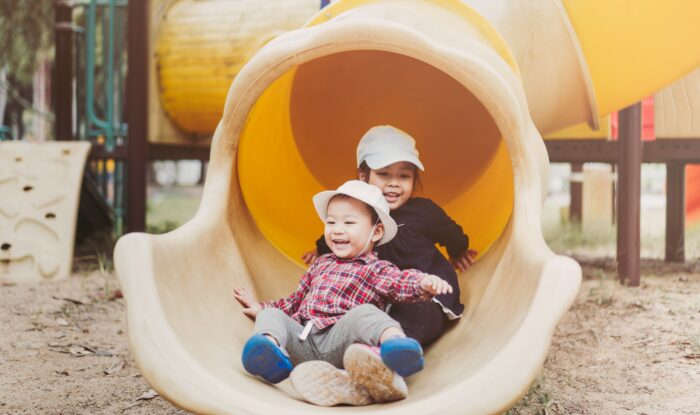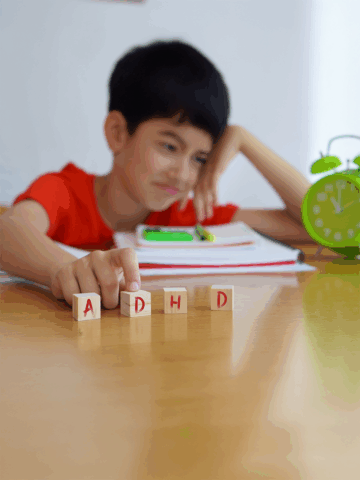Fostering healthy sibling relationships: Key strategies for caregivers
By Caroline Eskander, Psychology Post-Doctoral Fellow at CHOC
Sibling relationships are often considered the longest-lasting relationships for most individuals. Research has shown these relationships can significantly impact a person’s social and emotional development, as well as influence their self-esteem and social abilities.
While sibling relationships offer many benefits, they can also be complex and involve conflict. Caregivers can foster healthy sibling relationships during disagreements by encouraging conflict resolution, promoting prosocial behavior and fostering healthy communication through emotional and thoughtful language. The key question is: How can caregivers effectively promote healthy relationships among siblings?

Understanding sibling differences
First, it’s important to consider different types of sibling relationships. Each of these relationships is unique and requires specific support from caregivers. Think about which type of relationship fits your children best.
- Neurotypical siblings
- When neither sibling has developmental, physical or medical needs.
- Neurotypical and neurodiverse siblings
- When one sibling has developmental or cognitive needs.
- These needs may include speech delays, learning disabilities or intellectual disabilities.
- Diagnoses may include ADHD, autism, vision or hearing impairments, Down syndrome or cerebral palsy.
- When one sibling has developmental or cognitive needs.
- A healthy sibling and a sibling diagnosed with a chronic illness
- When one sibling has physical/ or medical needs.
Fostering healthy neurotypical sibling relationships
Here are general recommendations to support healthy sibling relationships:
- Provide opportunities for bonding
- Help siblings choose activities they can enjoy together, such as games, sports or arts and crafts.
- Plan family activities and outings that focus on sibling bonding.
- Promote problem-solving during conflicts
- Model conflict resolution and teach siblings healthy communication skills.
- Healthy communication includes active listening, empathy and cooperation.
- For example, active listening involves encouraging siblings to express their feelings and allowing each person to finish speaking before responding.
- Empathy can look like comforting each other with a hug and saying, “It’s okay, I can help you.” Sharing joy is another example, such as when one sibling says, “I’m so happy for you!” when the other gets a good grade or wins a game
- Cooperation between siblings might involve working together to build something, like with LEGOs, cleaning up as a team or playing team-based games.
- Allow siblings to respect each other’s boundaries and differences
- It’s important for each sibling to have one-on-one opportunities with caregivers to develop their individuality.
- Ensure consistency and fairness among siblings during individual quality time with caregivers through play and private conversations.
- Avoid comparisons
- Praise each sibling’s unique talents and progress without making comparisons.
- Encourage siblings to celebrate each other’s milestones through sincere support and encouragement

Fostering healthy neurotypical and neurodiverse sibling relationships
Neurodiversity brings unique experiences to sibling relationships. While the recommendations above are beneficial for all sibling relationships, here are additional ways to support neurotypical and neurodiverse siblings:
- Provide education and discuss differences
- Educate the neurotypical sibling about their neurodiverse sibling’s condition in an age-appropriate manner.
- Use books and videos to help the neurotypical sibling better understand their neurodiverse sibling.
- Examples of books include:
- You Are Enough by Margaret O’Hair (Pre-K – 3)
- Not If I Can Help It by Carolyn Mackler (3 – 7 years old)
- Same but Different: Teen Life on the Autism Express by RJ Peete, Ryan Peete, Holly Peete (7 and up)
- Educate the neurotypical sibling about their neurodiverse sibling’s condition in an age-appropriate manner.
- Promote empathy through modeling behavior
- Encourage behaviors that foster active listening, patience and support.
- Active listening can involve giving full attention when a sibling shares a story and using visuals, such as picture cards or gestures.
- Patience may look like allowing extra time for the neurodiverse sibling to understand a question and respond, using calm and encouraging language, such as, “Take your time, we’ll figure it out together.”
- Support can include celebrating strengths with statements like, “You’re really good at building this LEGO set! Can you help me with this part?”
- Encourage behaviors that foster active listening, patience and support.
- Create opportunities for positive interactions
- Identify similarities between your children and encourage shared activities that siblings can engage in together, promoting teamwork and support.
- Reach out to professional support
- Therapists and child life specialists can play a valuable role in fostering sibling empathy, understanding and overall relationship building.
Building stronger relationships between neurotypical siblings and those diagnosed with a chronic illness
Like the sibling relationships mentioned above, this sibling relationship presents unique challenges and opportunities. Here are specific ways to strengthen this relationship:
- Provide education and open discussions about chronic illness
- Educate the neurotypical sibling about their sibling’s chronic illness in an age-appropriate manner.
- Books and videos can be useful tools for teaching your child about their sibling’s chronic illness (see resources below).
- Promote feelings of involvement and empowerment in the healthy sibling
- Involvement can include having the healthy sibling provide laughter through jokes or offer distractions, such as art, during their sibling’s daily routines and medical regimens.
- Ensure the healthy sibling is not taking on a caregiver role.
- Caregiver roles may involve tasks, such as ensuring their sibling takes medication or help with feeding or dressing.
- Promote patience and empathy
- Process feelings about chronic illness with all siblings to encourage closeness and strengthen sibling attachment.
- Validate each sibling’s emotions related to the chronic illness and work together to maintain closeness, especially during medical appointments.
Fostering positive sibling bonds for lifelong growth and connection
Sibling relationships are valuable for individuals’ development and for their relationships later in life. Recognizing and respecting differences between each sibling is key to improving sibling relationships. It is essential that caregivers provide opportunities to foster positive and thriving sibling bonds based on the points outlined above.
Additional Resources
The Best Books About Neurodiversity for Kids | Scholastic
Books for Children with Chronic Illness (135 books)
9 Books for Kids with Chronic Illness
References
Barata, Ö., Acar, I. H., & Bostancı, S. (2022). Associations among adolescents’ mindfulness, sympathy, cognitive empathy, and sibling relationships. Psychological Reports, 127(1), 256–275. https://doi.org/10.1177/00332941221097951
Hilário, A. P. (2021). Sibling caring roles and responsibilities when a child suffers from a chronic illness.Sociology Compass, 16(1). https://doi.org/10.1111/soc4.12950
Nguyen, L., Jack, S. M., Davis, H., Bellefeuille, S., Arafeh, D., Di Rezze, B., Ketelaar, M., & Gorter, J. W. (2024). “filling in the gap”: A qualitative case study about identity construction of siblings of youth with a neurodisability. Journal of Adolescence, 96(6), 1354–1367. https://doi.org/10.1002/jad.12353





